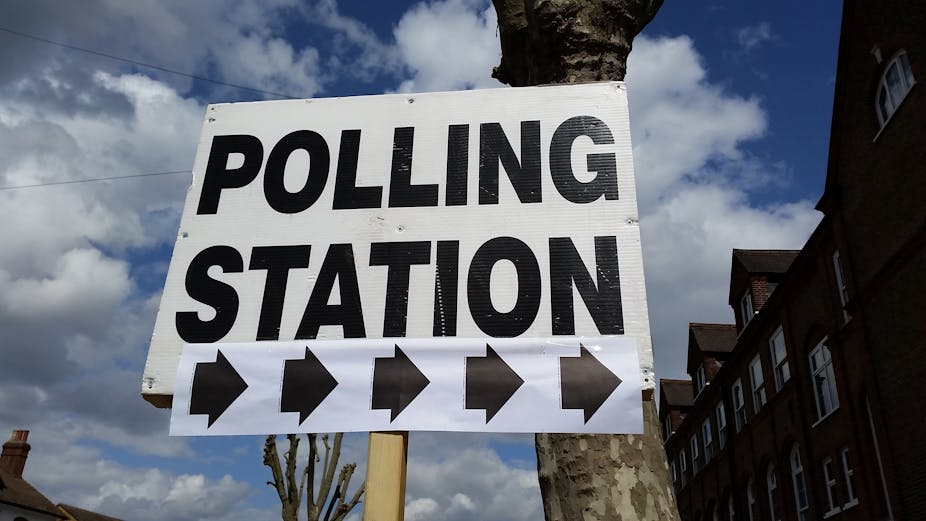More than 4,000 seats will be contested in local elections across England on May 3. Most of these lie outside London, in metropolitan and shire districts and in unitary councils, where 45% of the electorate voted to stay in the EU, compared to 60% of Londoners.
These elections will be an important further indicator of regional divisions across England, where political differences reflect serious imbalances in wealth, opportunity and power.
Below the level of the devolved nations (Wales, Scotland, Northern Ireland), there are very few decision-making links or channels of communication in the UK for central government to connect with the regions. This over-centralised governance structure is at the heart of a national problem – the ongoing imbalance in regional growth across the UK.
London is more dominant over the UK regions than Paris is over France in terms of financial and legislative decision-making. Fiscal centralisation – the lack of power to raise or spend resources at the local level – is central to the problem.
Local taxes account for 1.6% of GDP in the UK, compared to 16% in Sweden and 13% in Denmark. More than 73% of the revenues for the West Midlands Combined Authority (which includes the UK’s biggest city, Birmingham) come directly from central government transfers. Compare this figure to the equivalent percentage for Berlin (33%), Madrid (32%), New York City (26%), Paris (16%), Frankfurt (13%) and Tokyo (13%). No money means no power.

With power comes responsibility
Rebalancing the UK economy is critical to the country’s long-term social and political stability. And it must be done by promoting growth in the regions outside of London and the South-East. This is in the interests of the whole country, beyond the media spin about the haves (London and the South-East) and the have-nots (everywhere else).
There are critical and worsening tensions between centre and periphery. A major trigger is the growing imbalance in public funding in areas as diverse as education and transport, which privileges London and the South-East at the expense of other regions.
For example, London-based schools now outperform those in all other regions at GCSE-level as a result of significant investments focused on the capital. And in terms of transport infrastructure investment, London receives £1,500 per head of its population more than the North of England and more than half of all UK transport spending.
Economic wealth, the ability to create it and access the benefits it brings, are hugely unevenly distributed. This imbalance of resource allocation and of access to opportunity underlies disadvantages in health and social welfare and drives political division.
The metro mayors and the combined authorities are part of the solution, supporting a drive for development in the city-regions. But they can only do this with devolved power and resources from London.
With power comes responsibility – for developing and implementing locally appropriate growth plans. Regional industrial strategies are needed, which focus on specific locales and promote smart specialisation. They need to be customised and coordinated to exploit the distinctive assets and capabilities of different regions, and also compensate for unique local constraints. In the West Midlands and in many areas of the UK, skills shortages, linked to lower levels of innovation, productivity and competitiveness, are a major constraint.
Inclusive growth
Focusing on productivity and economic growth alone will increase imbalances within regions that merely mirror the national problem. In the West Midlands, for example, growth could easily come solely from an area such as affluent Solihull while the post-industrial Black Country gets left behind. Regional growth needs to be inclusive.
This requires support from both the private and the public sector. Investments from both should balance support for improving company-level performance with schemes to bring the unemployed and the disadvantaged into the work place and help the least-skilled. Reducing the burden on public sector services is the other side of the coin to productivity growth in the private sector.
On top of the long-term and growing spatial inequalities, Brexit brings with it a threat to worsen the economic prospects of the UK’s disadvantaged regions, relative to London and the South-East. But it also offers the opportunity to develop international competitiveness, export-led growth and inward investment across all regions of the UK.
This will only happen if central government avoids being sucked further into the political black hole of uncertainty that Brexit is creating. And it will only happen if the government has the confidence to follow a more devolved model of governance.
The upcoming local elections will be an important indicator of the mood of the English regions. But, as we now know from experience, elections are too blunt as instruments for resolving complex issues. Rebalancing the economy and restoring greater social and political cohesion may need a different kind of politics.

